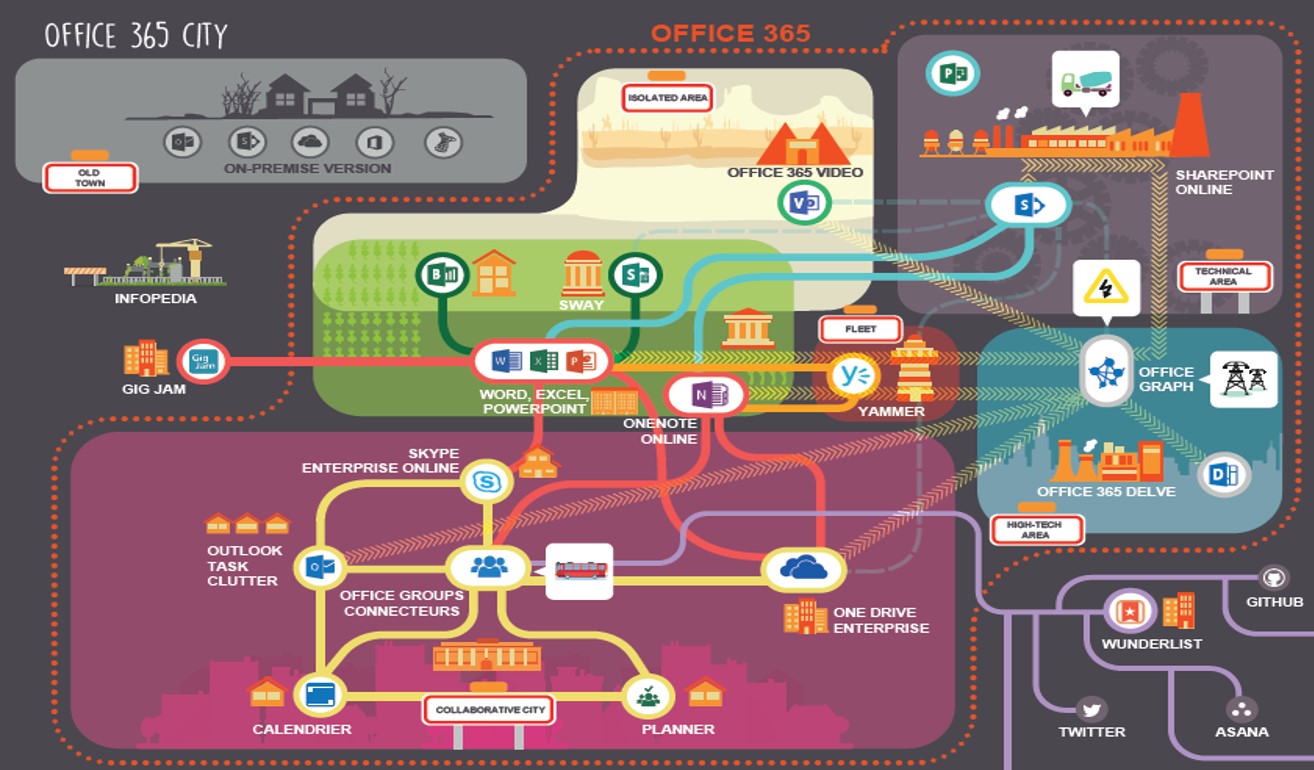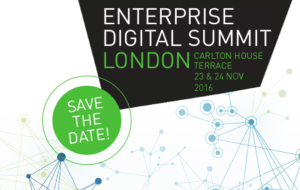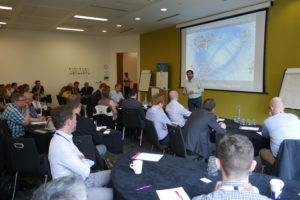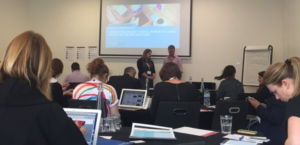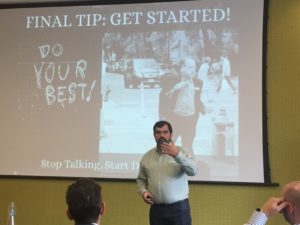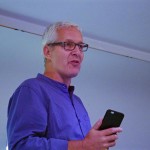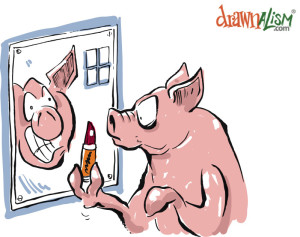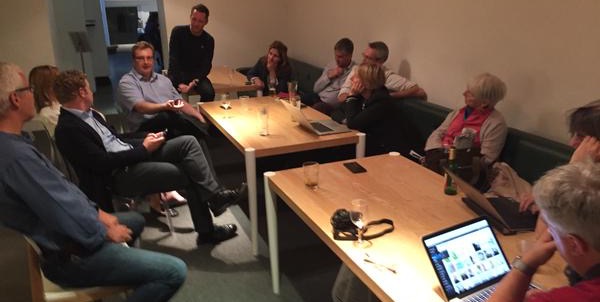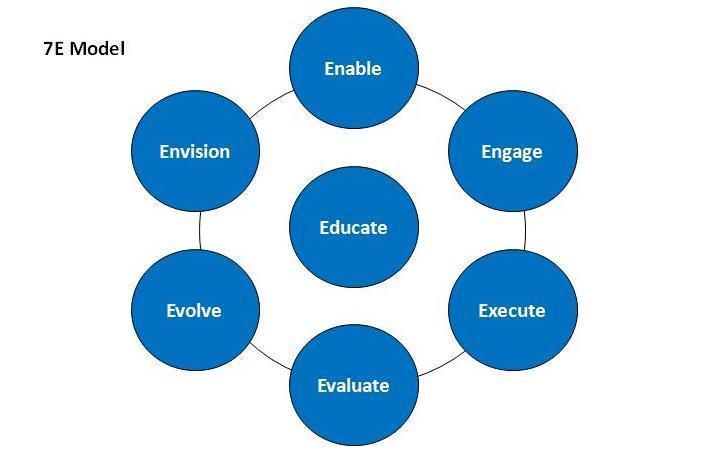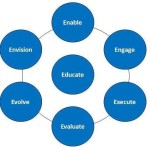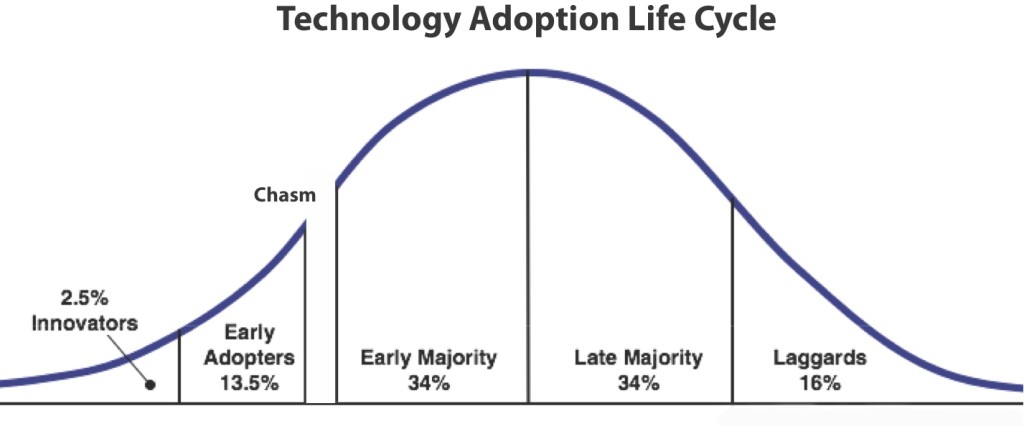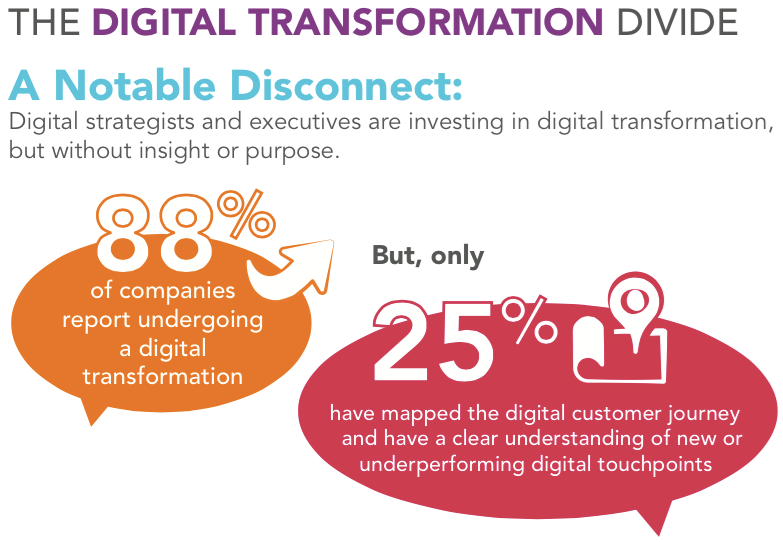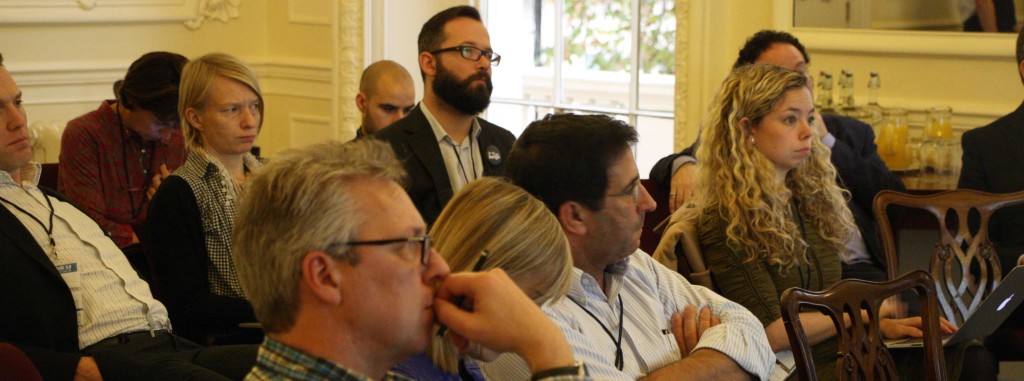Marc Wright invited us to join in the simply communicate fun at Social Media In Large Enterprise London yesterday – follow #smilelondon to see the great tweet stream. This is the first of a set of posts from the Agile Elephant team reporting on what was an inspiring and well organised day, packed with good stories and networking. I’ll cover thoughts from our research partners Lecko combined with observations on Office365, Microsoft and Teams.
Michel Ezran and Bastien Le Lann of Lecko were Marc’s first victims of the day. Lecko have been reporting on the enterprise social network and collaboration space for 8 years. We’ve been working with them for the last 2 years. Amongst a lot of research reports and analysis they publish an annual report which analyses the market to show how companies are using enterprise social networks, social collaboration and productivity products, and then provides a detailed comparison of the platforms available – they survey 30 products against 550 criteria. They cover every significant solution from Jive and IBM Connections to products like Office365 and Slack. Yesterday they explained their 4 headline findings from the report:
- Collaboration and use of social software is steadily on the increase, more than 15 % up in 2015 over 2014.
- Managers have a significant level of awareness of the benefits (and risks) of digital transformation, but they still lack practical knowledge
- Digital Leaders are engaged in a sustainable way – they represent a new asset for the more digitally savvy companies
- Use of social collaboration is happening and helping at the heart of the value chain.
Take look at the detailed data sheets they produce in their product comparison. (I’m not expecting you to read the detail above, just get a flavour of how they show a product’s strengths and weaknesses – download the report to get to the detail.) The charts for Office365 versus Slack quickly show you the scope and strengths of each. They went on to present a separate report, also available for free download – their latest deep dive in to Office365 which was published at the end of last month, a few days before Microsoft announced Teams. It provides a detailed review of Microsoft’s strategy and multiple, overlapping product set. I particularly like their “London Underground” influenced map showing how the Office365 City fits together. Their conclusion is that they see a very good product, but it hasn’t yet realised a true digital workplace and they don’t see integration or an app layer. The report will be updated to reflect Teams, which is actually built on the Office Groups functionality which is at the centre of the map.
Later in the day Rich Ellis of Microsoft talked with Marc about the new Teams product and how it fits in to their strategy. Rich was at Yammer before they were acquired, and was very clear in explaining that “Yammer is going nowhere!”. There were a few chuckles around the room, but he went on to explain Yammer is a key part of their strategy and onward development, providing broad collaboration across work groups. He commented that Satya (Nadella, the Microsoft CEO) jumps in to Yammer to connect and join in the conversations happening across the company.
Rich explained how Teams is powered by Office Groups and how the Office graph sits below mapping what is relevant to us, listening to what we are working on and seeing what we are doing When you set up a Team it generates a team email address, chat space, with a team OneNote and team sharepoint. He explained how you might start with a group which is private or closed, and how groups are searchable and you chose chose which ones to join. The idea is to let users gravitate to the tools they want to use, and cater for all the options. So Teams doesn’t replace Yammer. It provides small team collaboration while Yammer allows broad collaboration across groups and will continue to be developed.
He talked about early customers like Accenture, who already have 750 TB of teams data on their OneDrive. He talked of the the compute capacity available to customers and how you can do real time language translation within Skype for Business. He highlighted the openness of Microsoft’s approach commenting that they even have a connector in Teams for Google analytics. In answers to questions from the audience he alluded to future developments in Yammer to allow external sharing beyond internal users, saying “stay tuned, it’s coming”. He explained how Teams is a public cloud based app, but that there would be extensibility to connect to hosted and on premise solutions. Inevitably he was also asked about Microsoft’s reaction to Workplace by Facebook. With a wry smile he explained how they are excited by the breadth available in the marketplace.
He made a strong case for how Teams provides a big step towards the digital workplace and is a very significant addition the Office 365 product family positioned alongside Yammer.
We’ll publish more on SMILE London soon, and if you want to know more about distributing digital across the enterprise, join us at the Enterprise Digital Summit London next week on 24 November. Follow the link here or below to find out more.



